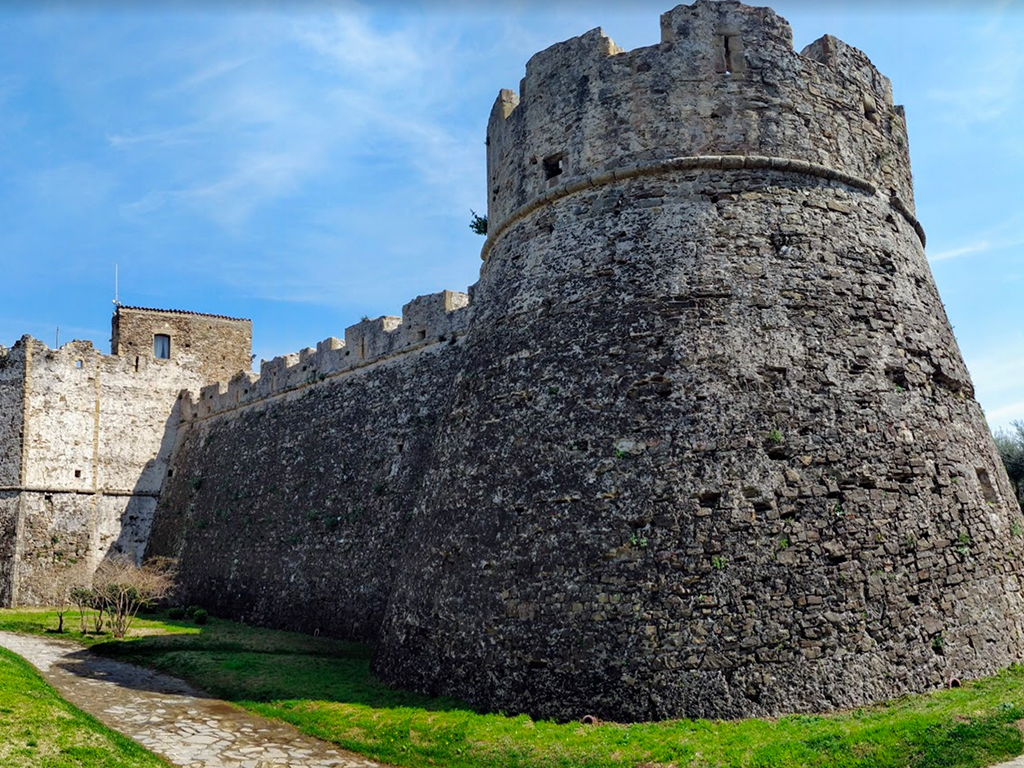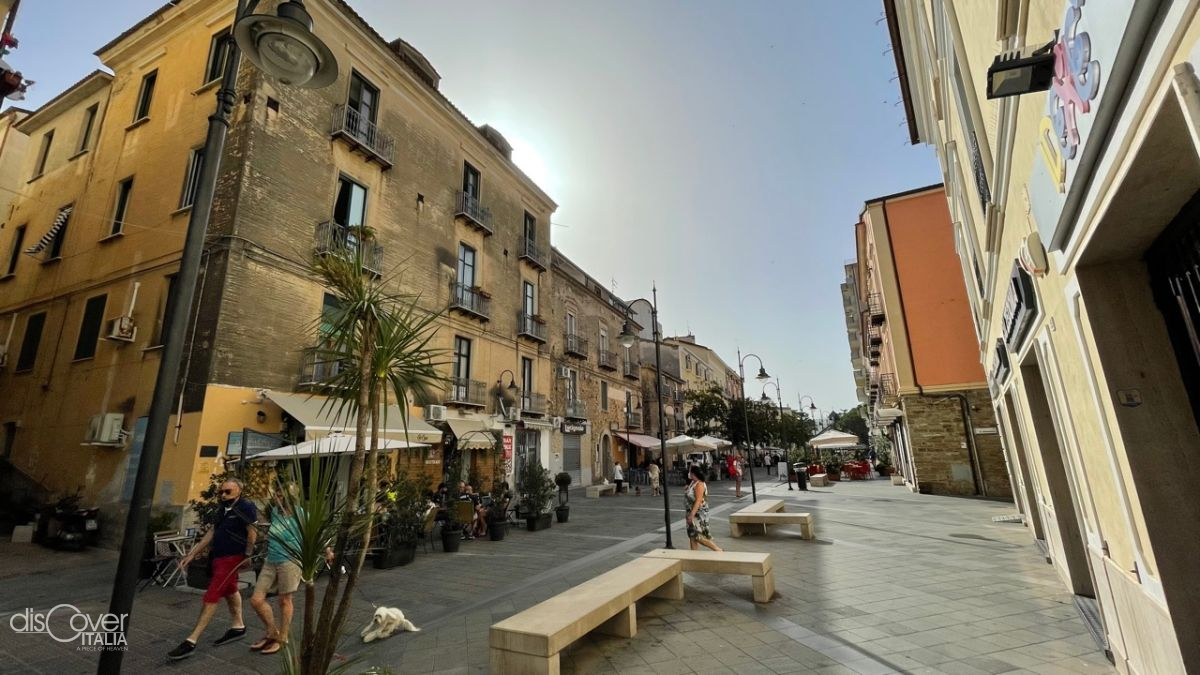A cliff overlooking the sea at the southern end of the gulf of Salerno. Dominating a stretch of coast that alternates sandy shores with rocky walls. An ideal site, a protected landing place, for ancient navigators.
 And as a commercial base, chosen by the Greeks even before founding, not far away, Poseidonia. Someone speculates that on that promontory, clearly visible from the sea, the acropolis could have risen. However, the modern name of Agropoli derives from the Greek meaning “city at the top”. For the Romans, who called it Ercula, it was a port in the service of Paestum, when this was starting to sink into the sand. But it was the Byzantines, during the Greek-Gothic war between 535 and 553 who decided to fortify the cliff. On which the bishop of Paestum took refuge to escape the Longobards, when they invaded the city of Poseidon. And so Agropoli became the most important center of the lands that remained under Byzantine rule, lasting until 882, when it fell into the hands of the Saracens, who made it a ribat, a military base for their destructive raids in the surrounding area. Only in 915 the Saracens were defeated and driven out and Agropoli was placed under the jurisdiction of the bishops, who returned to Capaccio. With the advent of the Aragoneses, who enlarged and renovated the castle, King Alfonso ceded Agropoli to Giovanni Sanseverino, and then took it back in 1443. The fiefdom returned to the Sanseverinos in the sixteenth century, to pass to many other families. The last of the series were the Sanfelice who with the Delli Monti kept it until 1806, when feudalism was abolished.
And as a commercial base, chosen by the Greeks even before founding, not far away, Poseidonia. Someone speculates that on that promontory, clearly visible from the sea, the acropolis could have risen. However, the modern name of Agropoli derives from the Greek meaning “city at the top”. For the Romans, who called it Ercula, it was a port in the service of Paestum, when this was starting to sink into the sand. But it was the Byzantines, during the Greek-Gothic war between 535 and 553 who decided to fortify the cliff. On which the bishop of Paestum took refuge to escape the Longobards, when they invaded the city of Poseidon. And so Agropoli became the most important center of the lands that remained under Byzantine rule, lasting until 882, when it fell into the hands of the Saracens, who made it a ribat, a military base for their destructive raids in the surrounding area. Only in 915 the Saracens were defeated and driven out and Agropoli was placed under the jurisdiction of the bishops, who returned to Capaccio. With the advent of the Aragoneses, who enlarged and renovated the castle, King Alfonso ceded Agropoli to Giovanni Sanseverino, and then took it back in 1443. The fiefdom returned to the Sanseverinos in the sixteenth century, to pass to many other families. The last of the series were the Sanfelice who with the Delli Monti kept it until 1806, when feudalism was abolished.

On the cliff, the castle is the fulcrum of the hamlet, where it is wedged with the apex of its characteristic triangular plan with three circular towers in the corners. It was surrounded by a large moat, which now remains only on the side of the village. The current structure is the result of the interventions carried out in the Aragonese period. During the French decade, the castle was the seat of the military genius and became fundamental for the defense of the entire Principality of Citra. Those events are remembered by the so-called "room of the French", one of the most important points of the castle. The other, used as a theater and for cultural initiatives, is the parade ground, built on the rock of the cliff.

The village grew around the castle and was surrounded by the walls built in the Norman era. To access it, there are stairs going up leading to the entrance through the seventeenth-century crenellated door with the coat of arms of the Delli Monte Sanfelice, barons of Agropoli. Only from the nineteenth century did the inhabited center begin to expand outside the historic village. Inside which is the mother church of Saints Peter and Paul, near the castle and mentioned in a letter from Pope Gregory the Great dating back to 593. The title to the two apostles, patrons of the city, refers to the landing of Saint Paul in the Agropoli area, as well as to the Holy fisherman, honored in a seaside place where fishing has always been one of the main activities. And with funds donated by fishermen, the church of Santa Maria of Constantinople was built in 1583, with a single nave and bell tower. The statue of the Madonna, with the particularity that it holds the Child on the left arm as required by the Byzantine iconography, was recovered at sea, after a stealing attempt from the Saracens. Also in the center is the seventeenth-century church of the Madonna delle Grazie, the ancient Santa Maria dal Pozzo, so defined because it is close to a water cistern.
Cirota Palace is the seat of the Civic Museum of Arts. On the ground floor there’s the archaeological museum, telling the ancient history of the territory of Agropoli. Among the most significant findings: valuable Lucanian funerary objects from the IV century with works by the famous ceramist Assteas such as the Crater and Lebes Gamikos, coming from the famous painted chamber tomb found in the Contrada Vecchia; the Italic marble sarcophagus from the III century AD with scenes from the cult of Dionysus and, dating back to the V century, the first document that testifies the presence of Christians in the area. On the first floor, art exhibitions and cultural events are held. A cultural destination will be given after the restoration of the historic furnace of 1890, that until its closure in 1970 produced bricks used to build today's Agropolis and for export by sea throughout Italy.
To protect the territory and the population from barbarian attacks, watchtowers were built every mile under the viceroyalty. In Agropoli there are the Tower of San Marco, circular, in a strategic position between the castle and the tower of Paestum, and, on another ledge on the sea south of the castle, the quadrangular Tower of San Francesco, close to what remains of the Franciscan convent of 1230, with a rectangular plan and an internal cloister.
Copyright video, foto e testi © 2020



Comments powered by CComment